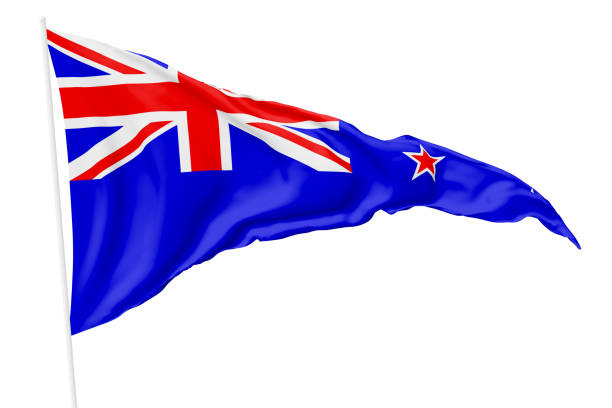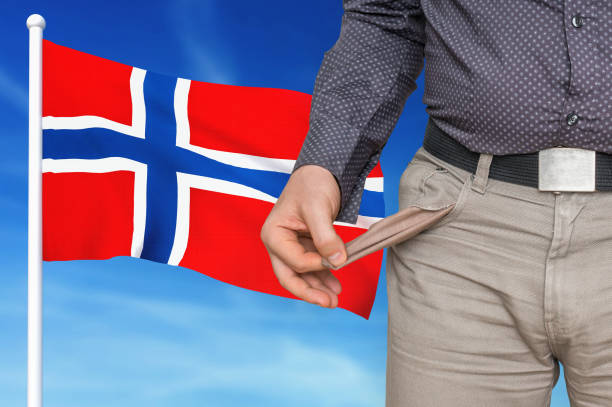Chasing the Northern Lights and Academic Dreams: A Comprehensive Guide to Full Scholarships in Norway
The allure of Norway, with its breathtaking fjords, vibrant cities, and world-class education system, beckons Filipino students seeking academic excellence in a stimulating and culturally rich environment. However, the high cost of living in Norway can be a significant hurdle for many aspirants. But fear not! This comprehensive guide empowers you to navigate the landscape of full scholarships in Norway, maximizing your chances of turning your academic dreams into reality.
Advertisements
Demystifying Full Scholarships in Norway
A full scholarship in Norway typically covers the entire cost of tuition fees for your chosen program. Additionally, it might encompass living expenses, such as accommodation, food, and transportation. While some scholarships solely cover tuition, securing a full scholarship significantly reduces the financial burden associated with studying in Norway.
Who Offers Full Scholarships in Norway?
Several entities in Norway offer full scholarships for international students, including Filipinos. Here’s a breakdown of the key players:
- Norwegian Government:
- Norwegian Quota Scheme: This prestigious program offered by the Norwegian Ministry of Education and Research targets students from developing countries, including the Philippines. It focuses on fields of study considered beneficial for mutual development, such as renewable energy, sustainable fisheries management, maritime technology, or education, with applications suited to developing country contexts. Awards typically cover tuition fees, living expenses, and travel costs.
- State Educational Loan Fund (Statens lånekasse for utdanning): This government agency offers loans and grants specifically for international Master’s students studying in Norway. A significant portion of the loan can be converted into a grant upon successful completion of studies and meeting specific criteria. This could include returning to the Philippines for a designated period after graduation.
-
Norwegian Universities:
Many Norwegian universities offer full scholarships for international students, including Filipinos. These scholarships can be highly competitive and are often merit-based, awarded to students with exceptional academic records, standardized test scores (if applicable), and strong research potential. Explore the websites of universities you’re interested in for specific scholarship opportunities.
-
Private Foundations and Organizations:
Several private foundations and organizations in Norway offer full scholarships for international students. These scholarships can be merit-based, need-based, or targeted towards specific fields of study relevant to the foundation’s mission. Utilize online scholarship databases or research companies with operations or partnerships in the Philippines to discover potential full scholarship opportunities.
Crafting a Winning Scholarship Application
Securing a full scholarship in Norway requires a well-crafted application that showcases your academic excellence, potential for success, and alignment with the scholarship’s objectives. Here’s a roadmap to guide you through the process:
-
Research and Identify Scholarships: Begin your journey by thoroughly researching scholarships available to Filipino students in Norway. Explore resources like:
- The websites of the Norwegian Ministry of Education and Research
- The websites of individual universities in Norway
- Scholarship databases dedicated to international students
- Philippine government agencies or organizations with partnerships with Norway
-
Eligibility Criteria: Carefully review the eligibility criteria for each scholarship you identify. Ensure you meet all the requirements, such as:
- Academic qualifications (minimum GPA requirements)
- Nationality restrictions (some scholarships might be exclusive to Filipino students)
- Language proficiency (English proficiency is often required, and Norwegian language skills might be beneficial for some scholarships)
- Intended field of study (some scholarships might prioritize specific fields relevant to development priorities in the Philippines)
- Work experience (some scholarships may require or prefer relevant work experience)
-
Application Deadlines: Set clear timelines and adhere to application deadlines strictly. Missing deadlines is an automatic disqualification for most scholarships. Mark important deadlines on your calendar and set reminders to ensure timely submission.
-
Required Documents: Applications typically require various documents, including:
- Academic transcripts (official English translations might be required)
- Standardized test scores (if applicable, such as the GRE or GMAT for Master’s programs)
- Letters of recommendation (from professors familiar with your academic abilities)
- A CV or resume
- A motivational letter (also known as a statement of purpose)
-
Compelling Motivational Letter: This is your chance to tell your story and convince the scholarship committee of your qualifications and aspirations. Here are some key aspects to consider:
-
Academic Background: Outline your academic journey, highlighting relevant coursework, achievements, and any distinctions you’ve earned. Demonstrate how your academic background prepares you for the chosen field of study in Norway. Mention any challenges you’ve faced in your educational journey and how you’ve overcome them.
-
Unique Perspective: As a Filipino student, you bring a unique perspective to the classroom. Highlight the specific knowledge, experiences, or cultural understanding you possess that can enrich the learning environment in Norway. Perhaps you’ve witnessed firsthand the challenges faced by communities in the Philippines or have insights into how to address issues relevant to your field of study within the Philippine context. Showcase how your studies in Norway will equip you to contribute to positive change upon returning to the Philippines.
-
-
-
Career Goals and Aspirations: Articulate your long-term career goals and how your studies in Norway will equip you with the skills and knowledge to achieve them. Express your desire to contribute to the development of the Philippines upon your return. Showcase how your chosen field of study aligns with development priorities in the Philippines, such as renewable energy, sustainable agriculture, public health, education, or maritime technology.
-
Financial Need (if applicable): If financial need is a factor in the scholarship’s criteria, explain your financial circumstances in a clear, concise, and honest manner. Avoid dwelling on hardship. Briefly explain how the scholarship would alleviate financial burdens and allow you to focus on your academic pursuits.
-
Cultural Exchange and Goodwill: Express your desire to participate in cultural exchange and foster goodwill between Norway and the Philippines. Mention ways you plan to engage with the Norwegian community and contribute to a vibrant international student environment.
-
Strong Writing Style and Proofreading: Maintain a clear, concise, and professional writing style. Avoid clichés and ensure your essay is grammatically sound and free of errors. Proofread meticulously before submitting your application. Consider asking a trusted advisor, teacher, or friend to review your essay and provide feedback.
-
-
Tailoring Your Application: Avoid generic applications. Tailor each application to the specific scholarship or program, highlighting aspects that resonate most with their unique criteria and focus areas. Demonstrate a genuine understanding of the scholarship or program and how you align with their objectives.
Additional Strategies for Filipino Students
Advertisements
In addition to the general application strategies outlined above, Filipino students can enhance their full scholarship prospects by considering these specific tips:
-
Network with Fellow Filipinos in Norway: Connect with the Filipino community in Norway, including alumni who have received scholarships. They can offer valuable insights into the application process, cultural exchange experiences, and navigating life as a Filipino student in Norway. The Philippine Embassy in Oslo might also be a resource for connecting with Filipino organizations or student groups.
-
Highlight Resilience and Determination: The Filipino spirit of “diskarte” (resourcefulness) and “tiyaga” (perseverance) is a valuable asset. Showcase any situations where you’ve overcome challenges or demonstrated determination in your academic pursuits or personal life.
-
Showcase Language Skills: While English proficiency is typically required for scholarships in Norway, demonstrating an effort to learn Norwegian can be a positive step. Explore online language resources or consider enrolling in basic Norwegian courses before your application to demonstrate your commitment to integration.
-
Financial Aid Options in the Philippines: Explore scholarship opportunities offered by the Philippine government agencies like the Commission on Higher Education (CHED), the Department of Science and Technology (DOST), or scholarship programs offered by private foundations in the Philippines. Combining scholarships from different sources can help maximize financial support for your studies in Norway.
-
Government Loans (if applicable): Research government loan programs offered in the Philippines that might support studies abroad. These loans could potentially be combined with scholarships to fully cover your educational expenses in Norway.
Beyond Full Scholarships: Exploring Additional Funding Options
While full scholarships are the ultimate goal, securing them can be highly competitive. Here are some additional funding options to explore to bridge the financial gap for your studies in Norway:
-
Partial Scholarships: Many universities offer partial scholarships that cover a portion of your tuition fees. Combining a partial scholarship with other funding sources, such as government loans or work opportunities, can make studying in Norway more financially feasible. Consider these strategies when exploring partial scholarships:
-
Cast a Wide Net: Don’t limit yourself to scholarships offered by your chosen university. Research scholarship opportunities offered by external organizations, foundations, or professional associations related to your field of study. These organizations might offer partial scholarships specifically for international students pursuing studies in Norway.
-
Highlight Achievements and Goals: Tailor your application for partial scholarships, emphasizing your academic achievements, relevant work experience (if any), and long-term career goals. Demonstrate how your studies in Norway align with the scholarship’s objectives and how the funding will contribute to your academic success.
-
-
Work-Study Opportunities: International students in Norway are allowed to work part-time (up to 20 hours per week during semesters) with proper authorization. Explore these avenues to generate income and offset living expenses:
-
On-Campus Jobs: Universities often offer on-campus work opportunities in libraries, administrative offices, student centers, or cafeterias. These jobs can provide valuable work experience while contributing to your income.
-
Part-Time Jobs in Your Field: Look for part-time jobs relevant to your skills and field of study. This can provide practical experience while generating income. Research institutes, research centers, or companies related to your field might offer part-time positions suitable for international students.
-
Freelance or Online Work (if applicable): Depending on your skills and qualifications, explore freelance or online work opportunities that allow you to work remotely while studying in Norway. This could involve freelance writing, editing, graphic design, virtual tutoring, or online content creation (if your visa permits).
-
-
Teaching Assistantships: Some universities offer teaching assistantships to international students. These positions typically involve assisting professors with teaching duties or research projects in exchange for a stipend or tuition remission. Here’s how to explore teaching assistantships:
-
Contact University Departments: Reach out to the department or faculty where you plan to pursue your studies. Inquire about potential teaching assistantships available for international students.
-
Highlight Relevant Skills: When applying for a teaching assistantship, emphasize your strong language skills (English and potentially Norwegian), teaching experience (if any), and subject knowledge relevant to the professor’s research area.
-
-
Crowdfunding: Consider crowdfunding platforms as an alternative funding source. Create a compelling campaign that outlines your academic goals, financial needs, and how the funds will be used for your studies in Norway. This approach can help you raise funds from friends, family, and a broader online community who support your educational aspirations.
Living Frugally and Managing Costs in Norway
While securing scholarships and exploring various funding options is crucial, understanding the cost of living in Norway and practicing smart budgeting can significantly impact your financial situation. Here are some tips for living frugally and managing costs effectively:
-
Accommodation: Housing can be a significant expense in Norway. Explore affordable housing options such as student dormitories, shared apartments, or renting a room in a private home. Consider living outside city centers where housing costs might be slightly lower.
-
Food and Groceries: Eating out frequently can be expensive. Explore grocery stores offering budget-friendly options and prepare meals at home. Consider joining student organizations that might organize group grocery shopping trips or bulk-buying opportunities.
-
Transportation: Utilize public transportation (buses, trams, or subways) for commuting. Explore student discounts on public transportation passes. Consider cycling or walking for shorter distances when the weather permits.
-
Textbooks and Course Materials: Textbooks and academic resources can be expensive in Norway. Explore online resources, libraries, or used book stores to acquire course materials at a lower cost. Borrow textbooks from classmates or seniors whenever possible.
-
Entertainment and Leisure: Norway offers breathtaking natural landscapes and free outdoor activities like hiking, exploring fjords, or visiting national parks. Utilize these free leisure options to explore the beauty of Norway. Consider student discounts for museums, cultural events, or movie tickets.
Advertisements






